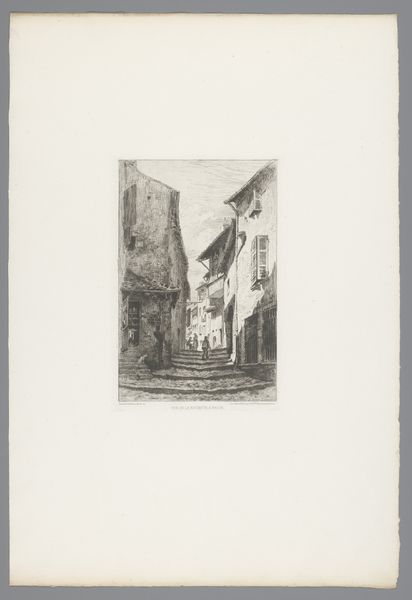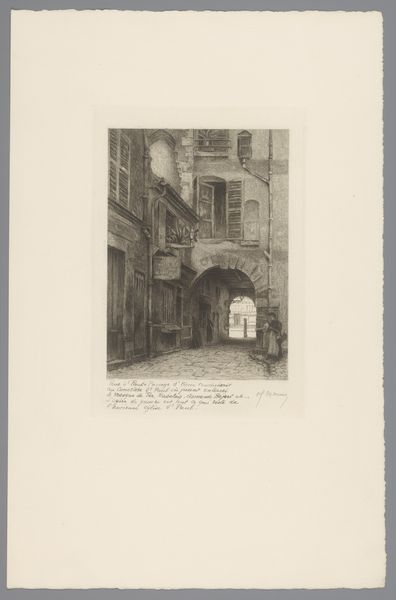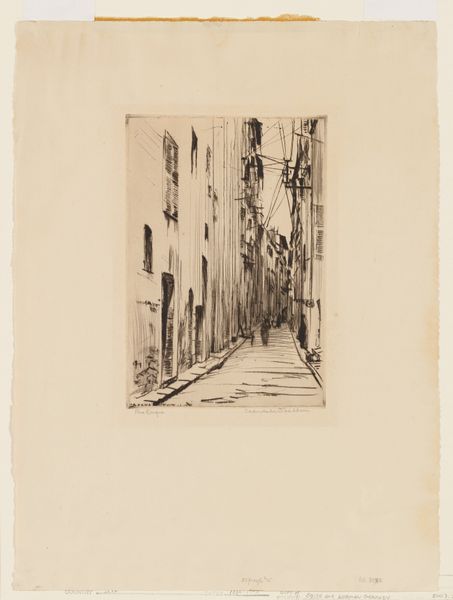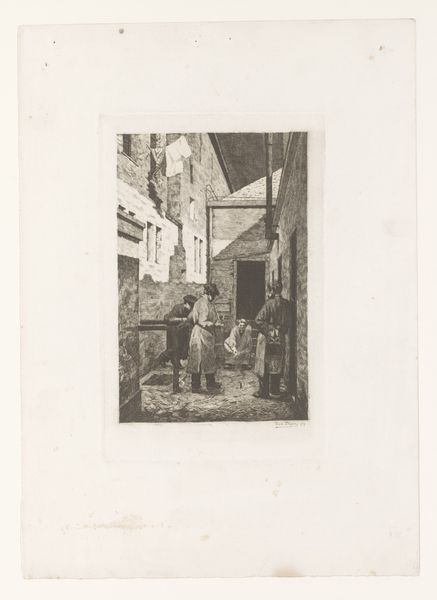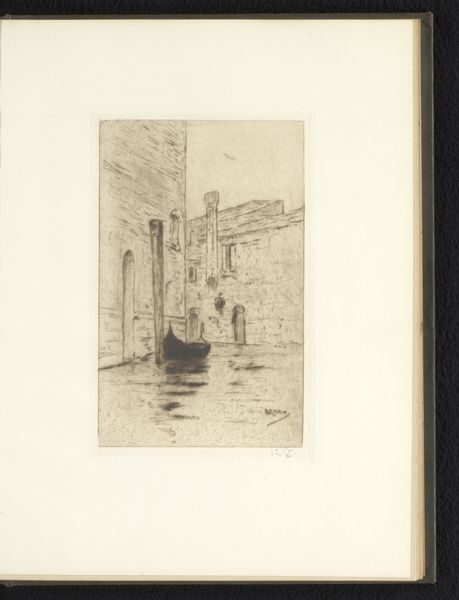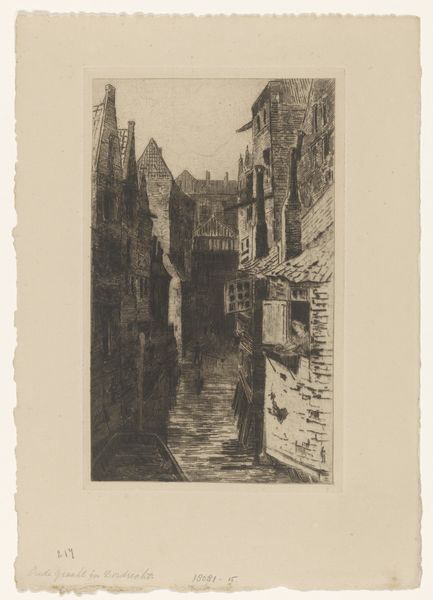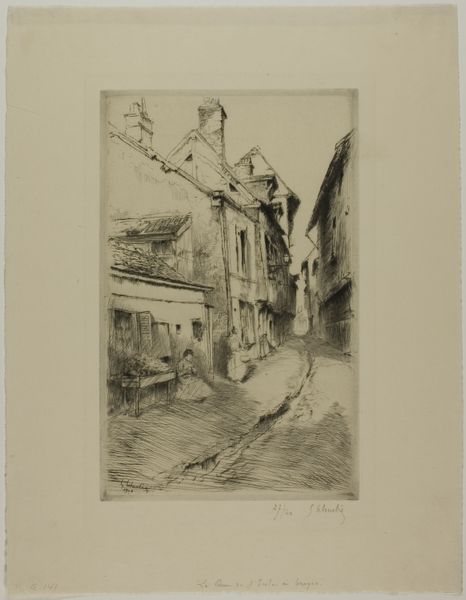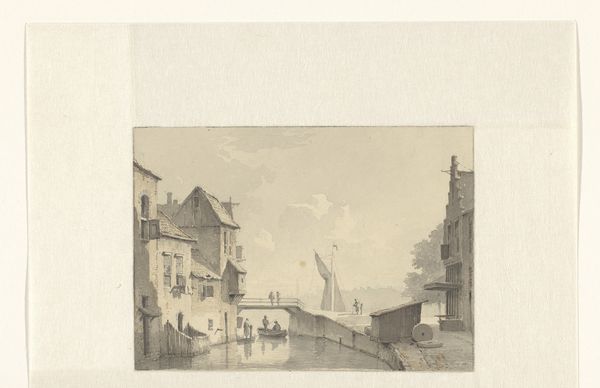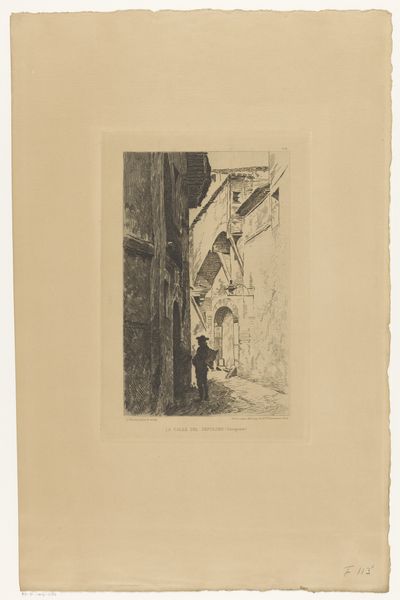
print, etching
# print
#
etching
#
landscape
#
cityscape
#
realism
Dimensions: height 198 mm, width 130 mm
Copyright: Rijks Museum: Open Domain
Editor: This is "Gevels langs een gracht in Nijvel," or "Facades along a canal in Nijvel," an etching by Theodoor Hannon, created in 1876. It's a beautifully rendered cityscape, but it also feels very still and a bit austere to me. What stands out to you when you look at this work? Curator: Well, considering its production, this etching immediately directs my attention to the socioeconomic landscape of 19th-century printmaking. The accessibility of printmaking techniques like etching democratized art production, allowing for broader participation and consumption. Note the lines etched onto the copperplate – each one a trace of labor. It makes me think about the role of craft and artistic skill in representing an increasingly industrialized world. Editor: So, the *process* of making it is as important as what it depicts? Curator: Exactly. The etching itself is a commodity. Think about Hannon, the artisanal labour involved, and who this image was *for*. Was it intended for mass consumption, or a more limited audience? Editor: I hadn’t considered that. Does the subject matter – the architecture – factor into your materialist interpretation? Curator: Absolutely. Consider the depicted architecture and its purpose. Were these residential buildings, places of commerce, or spaces representing power structures? Further inquiry into the urban development of Nijvel at that time might reveal the impact of economic forces and shifts on the city's built environment. Notice the wear and tear rendered on those façades... Editor: It really does give you a sense of the city as a living, breathing, almost industrial organism, and this print captures that feeling so well. It’s more than just a pretty picture of buildings by a canal. Curator: Precisely. Seeing the image through a materialist lens invites us to question the boundaries of art, craft, labor, and commerce, which shapes our understanding and the production of it, as well as its place in society.
Comments
No comments
Be the first to comment and join the conversation on the ultimate creative platform.
